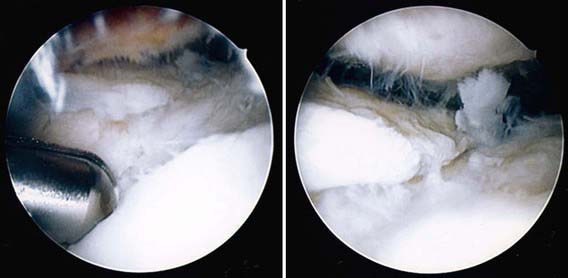Chapter 669 The Knee
Normal Range of Motion
Knee pain is one of the most common presenting complaints in older children and adolescents. This is commonly related to trauma but may also be insidious in onset. Knee effusion may be a common feature associated with knee pain. Depending on the etiology of the intra-articular process, the fluid collected in the knee may be blood (trauma- or hemophilia-induced hemarthrosis), inflammatory fluid (juvenile rheumatoid arthritis), or purulent material (septic arthritis). The presence of fat globules in the blood aspirated from a hemarthrosis suggests an occult fracture. Recurrent effusions can indicate a chronic internal derangement such as a meniscal tear. Aspiration of the joint fluid is often necessary to establish the diagnosis as well as to offer relief of symptoms (Chapter 684).
669.1 Discoid Lateral Meniscus
Treatment
Many children with discoid menisci require no treatment. These children should be followed and treated only if pain or loss of motion occurs. Surgery may be considered when DLM leads to locking, swelling, loss of motion, inability to run, or inability to participate in sports. The treatment is to excise tears and reshape the meniscus arthroscopically (Fig. 669-1). Meniscal instability can occasionally be repaired or reconstructed. Complete excision may be necessary if other procedures are unsuccessful.




